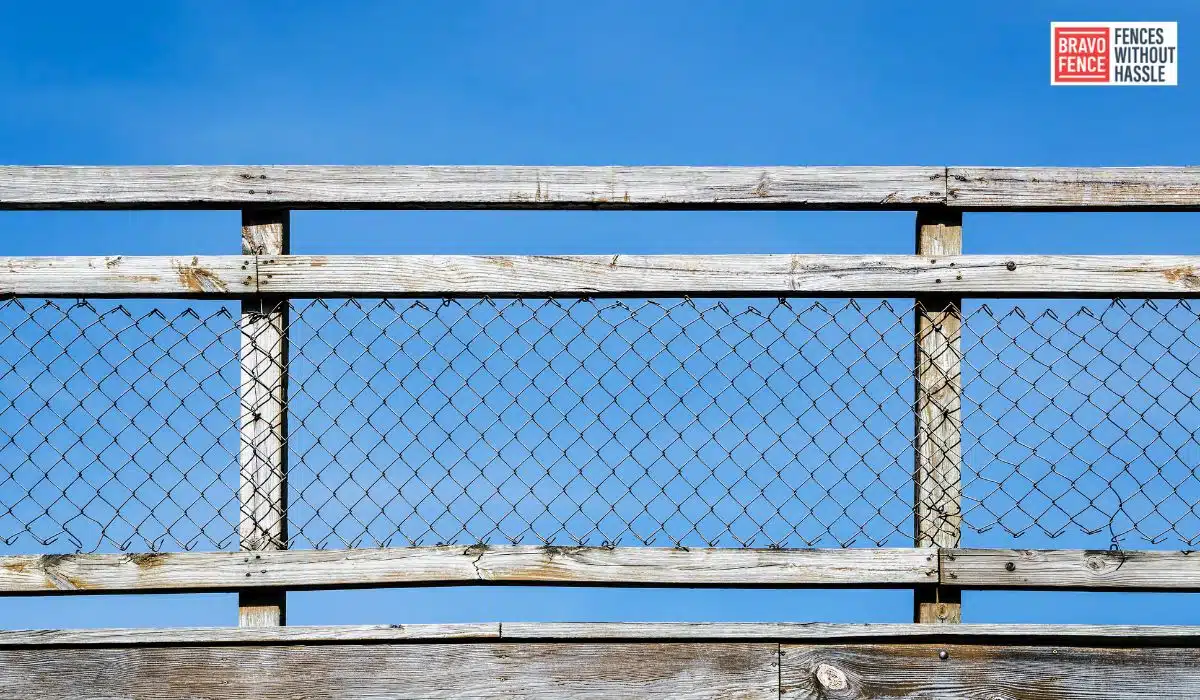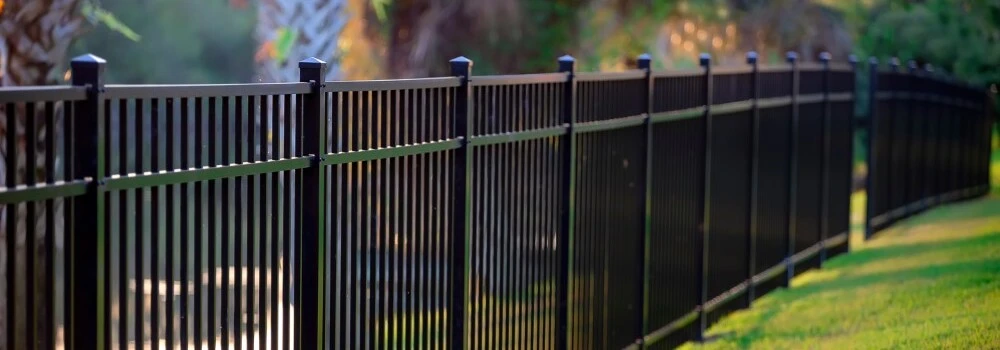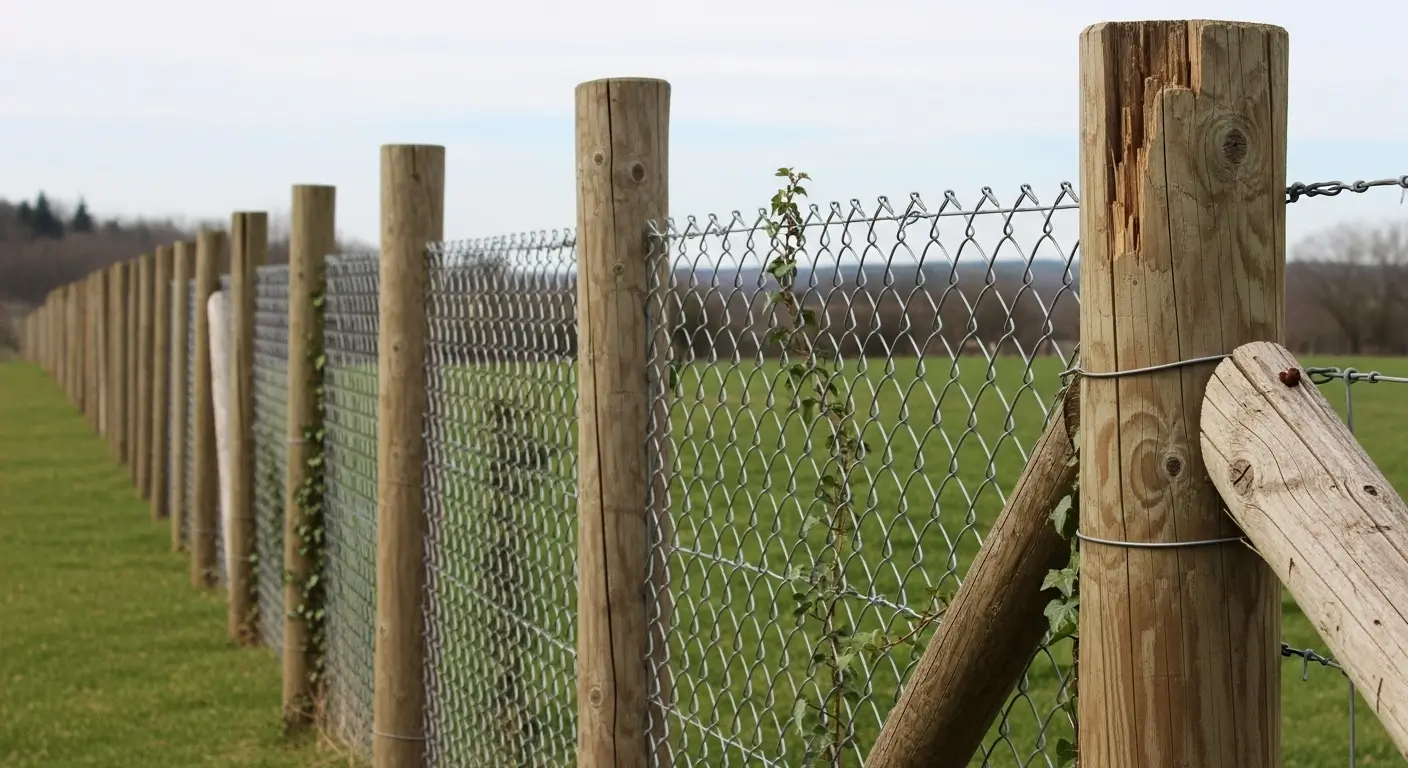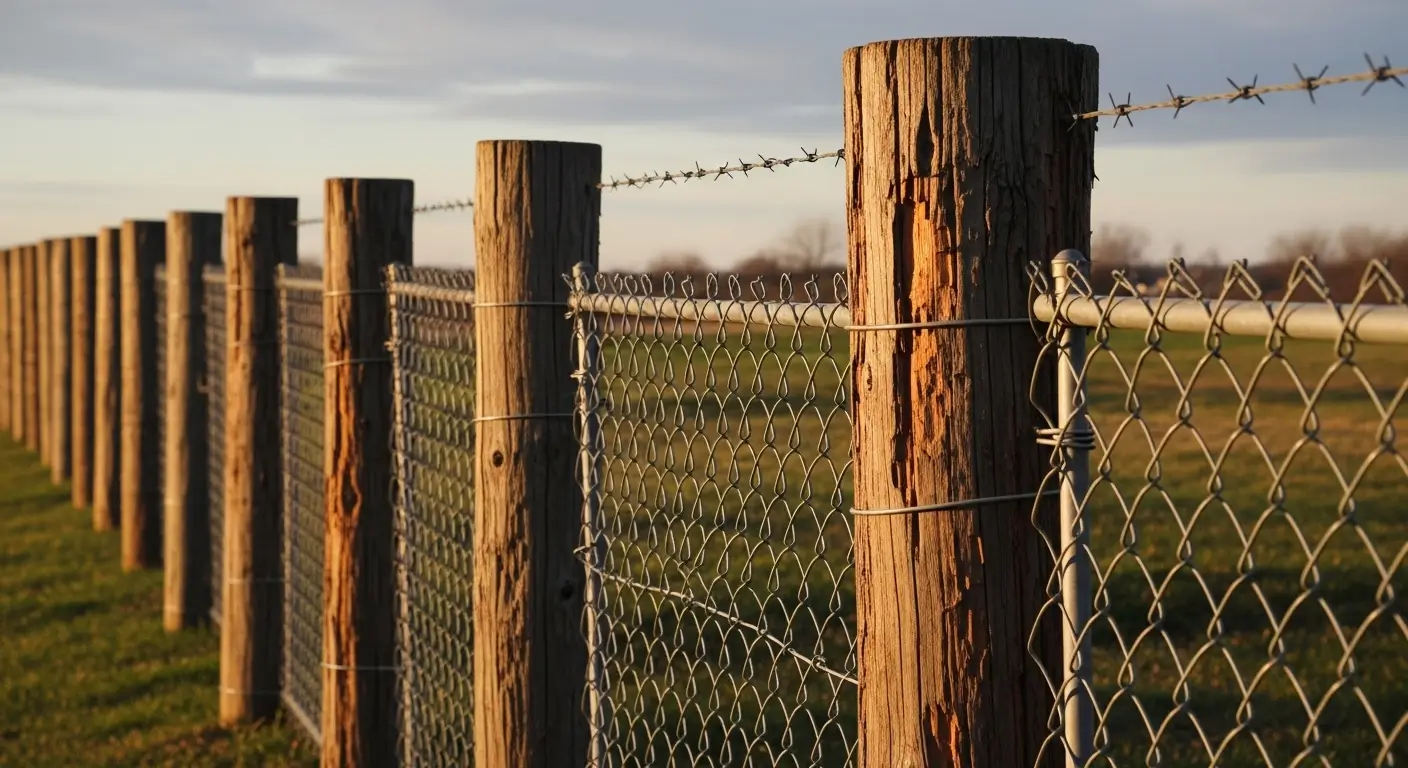
How To Install Chain Link Fence With Wood Posts?
Key Highlights
- How to Install a Chain Link Fence with Wood Posts: Start by planning your layout, marking post locations, and digging holes about one-third the post height deep. Set pressure-treated or cedar wood posts in concrete, attach galvanized chain link fabric using tension bands and bars, install top rails and gates, then tighten and inspect for a secure, professional finish, creating a durable and stylish chain link fence with wood posts.
- Why This Fence Design Works: Combines the strength and low maintenance of galvanized chain link with the natural warmth and visual appeal of wood posts, ideal for homeowners seeking both durability and curb appeal.
- Essential Tools & Materials: Gather key tools like a post hole digger, level, fence stretcher, and drill, plus materials including treated wood posts, chain link fabric, gravel, and concrete to ensure stability and longevity.
- Maintenance for Longevity: Keep your fence strong by rinsing debris after storms, tightening ties and bands, sealing or staining wood every 2–3 years, and inspecting for rust or soil erosion to extend its lifespan.
Looking for a fence that’s tough enough to protect your property but stylish enough to boost curb appeal? You don’t have to compromise. A chain link fence with wood posts gives you the best of both worlds, its strength and low-maintenance durability of chain link, paired with the warmth and character of natural wood. It’s a versatile option that works beautifully for backyards, rural spaces, or even as a custom DIY dog fence.
At Bravo Fence Company, we’ve seen how this hybrid design transforms outdoor spaces, and we’re here to show you how to make it happen, from planning and setting posts to attaching the chain link fabric and finishing with gates and maintenance tips. Whether you want to keep pets secure, define your property lines, or simply add a fence that’s both practical and attractive, this step-by-step guide will set you up for success.
Let’s get started!
What To Know Before Installing A Chain Link Fence With Wood Posts
Before you start digging holes and unrolling fence fabric, it’s important to understand what makes this hybrid fence style unique and how to set yourself up for success. A chain link fence with wood posts offers durability, affordability, and curb appeal in one package but planning ahead is what ensures a smooth fence installation and a long-lasting result. In this section, we’ll cover why this chain link fence design works so well, the key preparations you need to make, the essential tools and materials, and a quick project scope to help you budget your time and money.
Why This Fence Option Works Well
Blending chain link fabric with wood posts is a smart choice for homeowners who want strength and style without overspending. While a chain link fence vs wood fence comparison often highlights wood’s beauty but higher maintenance, this hybrid option balances both and can withstand the test of time.
- Durability: Galvanized chain link resists rust and pests, while treated wood posts provide a solid framework.
- Cost-effectiveness: Materials are more affordable than full wood fencing, with lower upkeep over time.
- Curb appeal: Wood posts add warmth and character, upgrading the look of a standard chain link fence.
- Flexible design: You can stain or paint the posts, add decorative caps, or even adapt the layout for a custom chain link fence design.
This makes it a practical solution for homeowners who want security, low maintenance, and style in one fence system.
Key Considerations Before You Start
Preparation is just as important as the installation itself. A few simple steps upfront will save you time, money, and potential headaches:
- Check Local Permits & Zoning Rules
- Check the Atlanta City Planning website to confirm whether a fence permit is required.
- Review local height restrictions and setback requirements to stay compliant.
- Call 811 (Utility Locate Service)
- Always call 811 before you dig utility companies will mark underground lines for free.
- Prevents costly and dangerous accidents.
- Prioritize Safety & Prep Work
- Wear gloves, boots, and eye protection when digging or cutting.
- Clear the fence line of debris, rocks, or vegetation before you begin.
- Map out your fence line with stakes and string for accuracy.
Tools and Materials Checklist
Having the right tools and supplies on hand makes installation much smoother. Here’s what you’ll need:
Essential Tools:
- Post hole digger or auger
- Shovel & wheelbarrow
- Level & tape measure
- Fence stretcher & pliers
- Wrench set & drill
- Circular saw (for trimming posts if needed)
Choosing the Right Materials:
- Pressure-treated or cedar wood posts (corner, gate, and line posts)
- Galvanized chain link fabric (for strength and rust resistance)
- Gravel or crushed stone (for drainage at the post base)
- Concrete mix (for secure post foundations)
Recommended Adapters, Fittings, and Hardware:
- Tension bands and tension bars (to secure the chain link to the posts)
- Heavy-duty brackets and screws (to attach fittings to wood posts)
- Top rail, rail end caps, and fence ties
- Gate hardware: hinges, latches, and post caps
Quick Project Scope At A Glance
To help you plan your timeline, budget, and effort, here’s a quick breakdown of the essentials:
| Feature | Recommendation | Notes |
| Fence Height Options | 4 ft, 6 ft, 8 ft | Choose based on pets, privacy, or security needs |
| Post Spacing | 6–10 ft | Closer spacing = more stability |
| Hole Depth | 1/3 of post height (24–30 inches) | Critical for long-term strength |
| Tools Needed | Post hole digger, level, wrench, saw | DIY-friendly, moderate difficulty |
| Difficulty | Moderate | Suitable for handy homeowners |
| Time Estimate | 1–2 days for an average yard | Add time for curing concrete |
| Cost Drivers | Materials, post spacing, gates, finishes | Budget for wood treatments & extras |
Why Choose a Chain Link Fence with Wood Posts in Atlanta, Georgia
A chain link fence with wood posts combines the durability and low maintenance of chain link with the natural, warm aesthetic of wood. Ideal for Atlanta’s climate, this hybrid fence offers a practical, secure, and visually appealing solution. It’s versatile, cost-effective, and perfect for homeowners who want a long-lasting barrier that enhances curb appeal.
Cost-Effective and Long-Lasting
Compared to a full wood fence, a chain link fence with wood posts is more affordable while providing similar durability for property security. Galvanized chain link resists rust and weather damage, while treated wood posts prevent rot and insect issues. This combination ensures a strong, low-maintenance fence that adds value without breaking the budget.
Enhanced Security with Visibility
The open weave of chain link allows homeowners to monitor their property while keeping pets or children contained. Strong wooden posts anchor the fence securely, making it difficult to breach. This chain link fence design balances safety and openness, offering both protection and visibility for residential or rural properties.
Aesthetic and Structural Benefits of Wood
Wood posts provide a warm, natural texture missing from metal alternatives. Homeowners can choose rough-cut cedar for a rustic, country-style fence or smooth stained posts for a polished look. Structurally, larger wood posts create a sturdy frame, enhancing the fence’s longevity and giving it a visually appealing presence.
Versatile and Easy to Maintain
This hybrid fence suits backyards, rural areas, and even commercial properties. Chain link fabric requires minimal cleaning, and wood posts need occasional sealing or staining. Its versatility allows customization to match landscaping, making it an ideal chain link fence vs wood alternative for homeowners seeking durability with style.
Step-by-Step Guide to Installing a Chain Link Fence with Wood Posts
Wondering how to attach chain link to wood post? Installing this type of fence is a flexible, on-site process that allows homeowners to gather the necessary materials and create a secure and visually appealing barrier. With proper planning and the right tools, this DIY-friendly building a fence method ensures durability, stability, and a polished finish tailored to your property.
- Plan and Prepare the Site: Clear the fence line of rocks, brush, and debris. Use stakes and string to mark corner, gate, and line post positions. Accurate layout ensures straight alignment and a stable final fence structure for a DIY dog fence or property boundary.
- Set the Wood Posts: Dig post holes about one-third the post height, add gravel for drainage, and position posts plumb. Use concrete to anchor corner and gate posts firmly, creating a strong framework for the chain link fabric.
- Attach Top Rail and Fence Fabric: Install tension bands and slide the top rail through the fabric loops. Secure the chain link to the end and corner posts using fence ties and tension bars. Proper alignment prevents sagging and maintains a professional fence appearance.
- Install Gates and Hardware: Attach hinges and latches carefully, checking level and swing. Ensure the gate aligns perfectly with the posts, swings freely, and closes securely. Well-installed gates enhance security and functionality for both property and pets.
- Finalize and Inspect: Stretch the fabric taut using a fence stretcher. Tighten all ties and fittings, inspect post stability, fabric tension, and gate operation. A thorough inspection guarantees a durable, secure, and long-lasting chain link fence design.
Maintaining Your Fence for Longevity and Performance
Proper maintenance keeps your fence durable, secure, and visually appealing. Following these chain link and wood fence maintenance tips prevents small problems from becoming costly repairs and ensures both wood posts and chain link fabric remain strong and functional for years
Rinse Debris and Mud After Storms
After heavy rain or wind, rinse away dirt, mud, and leaves. This prevents moisture buildup around posts, protects metal components, and keeps your fence looking clean and well-maintained.
Inspect Ties, Bands, and Wire Tension
Check all connections at least twice a year. Tighten loose ties, tension bands, and wires to prevent sagging and ensure the fence remains structurally sound.
Seal or Stain Wood Posts Every 2–3 Years
Apply a quality sealant or stain to protect posts from moisture, UV damage, and rot. This simple step preserves the appearance and stability of your fence.
Sand or Treat Rust Spots Early
Inspect chain link fabric and hardware for rust. Gently remove minor spots, apply primer, and touch up paint to prevent corrosion and maintain durability.
Trim Vegetation Away from Fence
Keep shrubs, vines, and grass clear of posts and mesh. Overgrowth can trap moisture, promote rot, and put pressure on the fence, reducing its lifespan.
Lubricate Gate Hardware
Use silicone or graphite lubricant on hinges and latches once or twice a year. Smooth operation prevents wear and prolongs the life of the gate.
Monitor Soil Erosion Around Posts
Regularly inspect the ground around posts. Fill gaps with compacted soil or gravel to prevent leaning, sagging, or instability, keeping your country-style wood and chain link fence secure and level.
Secure, Stylish, and Built to Last
A chain link fence with wood posts gives you the best of both worlds durable, low-maintenance chain link paired with the natural warmth and charm of wood. Perfect for backyards, rural spaces, or even a DIY dog fence, this hybrid design balances security, style, and provides a secure barrier for versatility.
With simple upkeep like sealing wood posts and checking hardware, your fence stays strong, functional, and beautiful for years.
Transform your property today call Bravo Fence Company for a free consultation at (770) 966-9970.
Frequently Asked Questions
What fittings do I need to attach a chain link to a wood post?
Use fittings like tension and brace bands secured with screws or lag bolts. Slide a tension bar through the fabric’s end and attach it to the bands to maintain tension and complete the fence.
How far apart should wood posts be, and how deep should holes go?
For a chain link fence, space wood posts 6 to 10 feet apart. Dig post holes to at least one-third of the post’s length, with corner and gate posts needing deeper and wider holes for stability.
Do I need concrete for wood posts, and how long before I can stretch the fabric?
Using concrete is recommended to secure wood posts for a stable installation. Allow the concrete to cure for 24-48 hours before stretching the chain link fabric to prevent misalignment of the fence posts.
What’s best at the bottom for pets a tension wire or a buried apron?
For pets that dig, burying the bottom of the chain link fabric is the most secure option. While a bottom tension wire adds strength, a buried edge offers the best defense against animals attempting to get under the fence.
Chain link fence vs wood: which costs less to install and maintain?
A chain link fence is usually cheaper to install than a wood fence because of lower material and labor costs. It also requires less maintenance, as it doesn’t need regular staining or sealing to prevent rot and weather damage.
How can I customize a chain link fence design for a country-style look?
For a country-style look, use rough-cut cedar posts and a thick wood top rail. This combination merges the practicality of a chain link fence with the rustic charm of wood, resulting in a distinctive fence design.
Tags: Complete Guide to Fence Design, Complete Guide to Fencing Materials, Complete Guide to Security Fences, Everything You Need to Know About Fence Maintenance, Explore Helpful Resources on Affordable Fencing, Explore Helpful Resources on Commercial Fencing, Explore Helpful Resources on Diy Fencing, Explore Helpful Resources on Residential Fencing, Inspiration and Tips on Fence Installation, Top Ideas and Insights About Chain Link Fences



